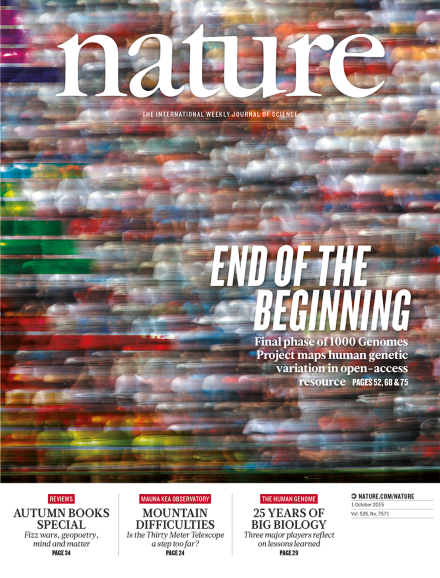Volume 526 Issue 7571, 1 October 2015
Editorial
-
-
Variety of life
Collection:
World View
Research Highlights
Social Selection
Seven Days
News
News Feature
Comment
Autumn Books
Correspondence
News & Views
Review Article
Article
Letter
Corrigendum
Toolbox
Correction
Toolbox
Technology Feature
-
Connectomes make the map
Collection:

